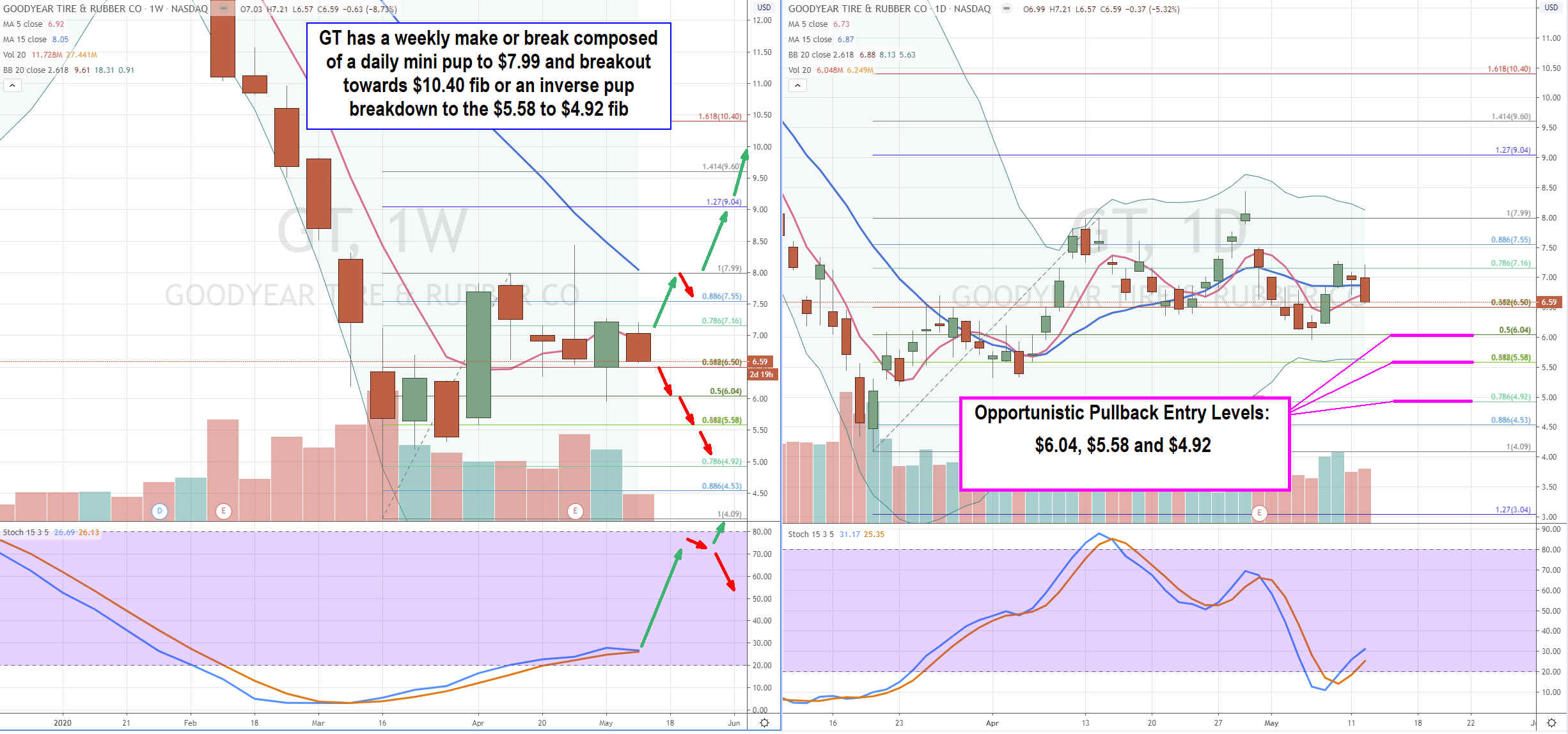The
Goodyear Tire and Rubber Company (NASDAQ: GT) is an all-American manufacturer of tires for over a century. The Company manufactures its products in 47 facilities in 21 countries around the world and operates over 1100 automotive service centers and distributes its products under various brands that include Dunlop, Sava, Fulda and Kelly. The Goodyear blimp has been an iconic symbol for the Company since setting flight in the 1920s. The Company has survived through World Wars, pandemics and recessions by adapting to industry trends and continuing to reinvent itself to better accommodate consumer preferences. The COVID-19 pandemic severely impacted Goodyear’s operations and stock price as shares lost almost double the
S&P 500 (NYSEARCA: SPY) (-35%) plunge at its pandemic lows. As regions start to relax isolation mandates and commuters take to the roads, Goodyear shares present an opportunity for risk-tolerant investors look for a long-term value play on the restart narrative.
Q1 2020 Earnings Plunge
Goodyear reported their Q1 2020 earnings results on April 30th with a loss of (-$0.60) per share compared to consensus analyst estimates of (-$0.25) per share, a (- $0.35) per share miss. Revenues beat estimates coming in at $3.06 billion vs. $2.95 billion analyst estimates, but still (-15%) year-over year (YoY) decline. Total tire unit volumes were 31.3 million down (-18%) YoY due to automobile manufacturers' plant shutdowns, demand contraction from shelter-in-place mandates and collapse in consumer confidence. Goodyear expects pre-tax losses between (-$185 million) to (- $195 million) for Q1 2020. Cost cutting measures include capping 2020 capex to no more than $700 million and implementing salary deferrals and furloughs for its 9,000 corporate and business unit associates with substantial cuts for the CEO and executive board. Discretionary spending cuts include marketing and advertising expenses along with a temporary suspension of the stock dividend to protect its $967 million in cash.
The Silver Lining
While all the maladies were disruptive, Goodyear highlighted some positive tailwinds including favorable raw material cost trends, $3.6 billion of liquidity (after refinancing its $2 billion revolver), and plans to resume most of their manufacturing plant operations by the end of May. The Company noted that industry conditions have been improving in China, which continues to serve as a template for the global restart model. Goodyear noted that all major OE plants in China are operational and all distributors were “open for business” within a month after the flattening of the curve. Goodyear secured coverage with all targeted full-service distributors in Europe and the Company is seeing “significant increase” in online sales and direct-to-consumers e-commerce volumes.
Raw Materials and Replacement Business
Goodyear pointed out the Great Recession template as proof of how cheaper raw material costs help mitigate some of the demand drop. The Company expects raw commodity cost savings would be in the $50 to $100 million in the second half of the year. Management noted that the replacement tire business continued to generate revenues throughout March and April as the commercial replacement business proved to be the strongest segment with only a (-3%) YoY volume decline. They are confident that business will ramp up in the second half of 2020.

Opportunistic Entry Levels
Using the rifle charts on the daily and weekly time frame provides a broader view of the landscape for MAT stock. The weekly rifle chart is in a make or break, which will resolve with either a stochastic mini pup off the 20 band settin gup a weekly 15-period moving average target on the $7.99 Fibonacci (fib) level. The weekly formed a market structure low (MSL) buy above the $6.04 fib as the daily stochastic attempts a make or break as well. This layout of the playing field provides three basic opportunistic pullback entry levels at $6.04 fib/daily MSL trigger, $5.58 super fib/sticky 5s zone and $4.92 fib. The upside remains at the $7.99 fib to $8.50 market structure high (MSH). If shares can breakout through the $8.50 area, the $9.04 and $10.40 (1.618 fib) are the next price targets. Traders can use fib levels to scalp reversions utilizing intraday time frames. Swing traders can scale for overnight to multi-day holds on converging daily/60-minute stochastic. Longer-term investors may consider a pyramid sizing dollar-cost averaging approach with a covered call strategy to buffer downdrafts.
Before you make your next trade, you'll want to hear this.
MarketBeat keeps track of Wall Street's top-rated and best performing research analysts and the stocks they recommend to their clients on a daily basis.
Our team has identified the five stocks that top analysts are quietly whispering to their clients to buy now before the broader market catches on... and none of the big name stocks were on the list.
They believe these five stocks are the five best companies for investors to buy now...
See The Five Stocks Here
Like this article? Share it with a colleague.
Link copied to clipboard.
